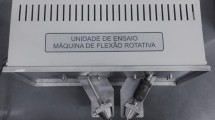Abstract
Inclusion content is important for the mechanical behavior and performance of Nitinol wires, particularly in fatigue-rated devices. The purpose of this work was to make a quantitative comparison between inclusion populations in cold drawn wires and the precursor populations in hot-rolled rod coil. Inclusion content was examined in a series of VIM-VAR alloys with different transformation temperatures (TTR) controlled by the Ni to Ti ratio. This range of chemistry was chosen to assess the effect of Ni to Ti ratio on inclusion formation. In order to understand the differences in behavior between carbides and intermetallic oxides in wire drawing, carbides, and intermetallic oxide inclusions were measured separately using optical metallography pursuant to ASTM F2063. In VIM-VAR alloys at higher Ni to Ti ratios about 50.79 a/o Ni the formation of intermetallic oxides appears to be suppressed in the as-cast material through the presence of carbon and the precipitation of eutectic TiC in place of eutectic Ti4Ni2Ox. The structure of VIM-VAR alloy also varies after hot working depending on the TTR of the alloy. Higher TTR binary alloys with lower Ni to Ti ratios tend to have more and larger intermetallic oxides and fewer and smaller carbides after hot working. Microsegregation plays a role in inclusion formation. That is, during solidification, C, O, N diffuse to the interdendritic regions. This increases the potential for the precipitation of nonmetallic species. Carbides and intermetallic oxides behave differently in hot working and cold drawing. The change in maximum carbide size from coil to wire is very near zero for all Ni to Ti ratios. The change in maximum inclusion size from coil to wire is driven mainly by the fracture of intermetallic oxides and the formation of intermetallic oxide stringers.










Similar content being viewed by others
References
“ASTM International, Designation: F2063-05,” Standard Specification for Wrought Nickel-Titanium Shape Memory Alloys for Medical Devices and Surgical Implants, ASTM Intl., West Conshohocken, PA, 2005
A. Toro, F. Zhou, M.H. Wu, W. Van Geertruyden, and W.Z. Mislolek, Characterization of Non-Metallic Inclusions in Superelastic NiTi Tubes, J. Mater. Eng. Perform., 2009, 18(5–6), p 448–458
“ASTM International, Designation: F2004-05,” Standard Test Method for Transformation Temperature of Nickel-Titanium Alloys by Thermal Analysis, ASTM Intl., West Conshohocken, PA, 2005
J. Frenzel, K. Neuking, and G. Eggler, Induction Melting of NiTi Shape Memory Alloys—The Influence of the Commercial Crucible Graphite on Alloy Quality, Mat.-wiss. u. Werkstofftech., 2004, 35(5), p 352–358
J. Frenzel, K. Neuking, G. Eggler, and C. Haaberland, On the Role of Carbon During Processing of NiTi Shape Memory Alloys. Proceedings SMST, B. Berg, et al., ed., 2007, p 131–138
Z. Zang et al., On the Reaction Between NiTi Melts and Crucible Graphite During Vacuum Induction Melting of NiTi Shape Memory Alloys, Acta Mater., 2005, 53, p 3971–3985
C.T.A. Moreira, et al., Corrosion Behavior of Equiatomic NiTi SMA in Sodium Chloride Solution, 17th CBECIMat, Novembro, 2006, Foz do Iguacu, Brasil, p 5124–5134
Author information
Authors and Affiliations
Corresponding author
Additional information
This article is an invited paper selected from presentations at Shape Memory and Superelastic Technologies 2010, held May 16-20, 2010, in Pacific Grove, California, and has been expanded from the original presentation.
Rights and permissions
About this article
Cite this article
Sczerzenie, F., Paul, G. & Belden, C. Comparison of Inclusions in Cold Drawn Wire and Precursor Hot-Rolled Rod Coil in VIM-VAR Nickel-Titanium Alloy. J. of Materi Eng and Perform 20, 752–756 (2011). https://doi.org/10.1007/s11665-011-9832-4
Received:
Revised:
Published:
Issue Date:
DOI: https://doi.org/10.1007/s11665-011-9832-4




